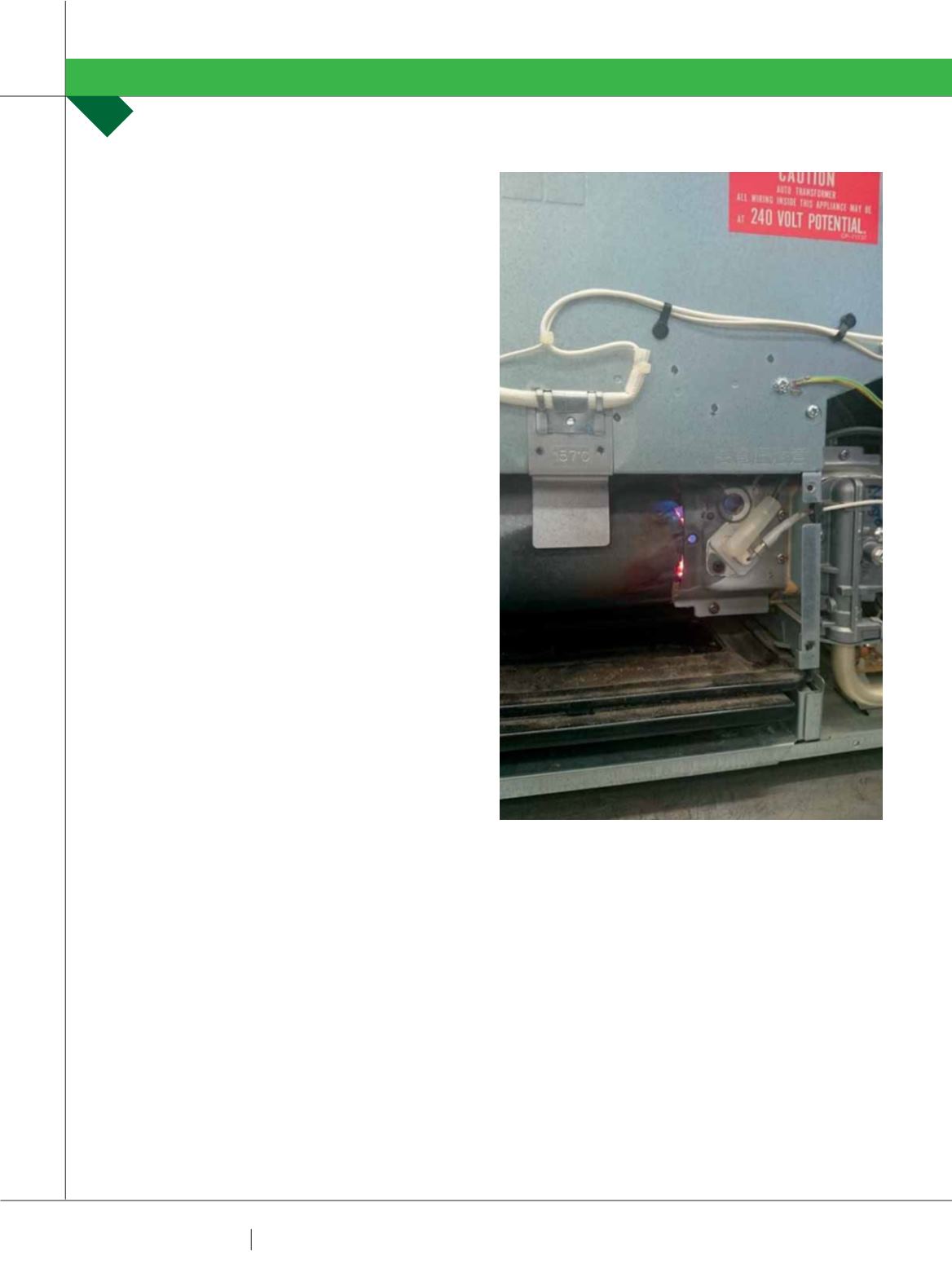

7 0
PLUMBING CONNECTION
SUMMER 2015
The most obvious difference between the original
Appendix R of the current AS/NZS 5601-1-2013 and the
rewrite is the title itself.
The current version was clearly titled ‘Spillage Test
for Flued Appliances’. This is not the case in this latest
amendment – in fact no title is evident.
What is stated under Note 3 of Clause R1 is: “This
appendix does not apply to room sealed appliances.” This
would include balanced flue and power flue gas heaters.
The most obvious question now is – why?
FLUE DESIGNS
Basic flue designs used in domestic installations include
conventional type flues (discharging combustion products
to the atmosphere only), balanced flue appliances and power
flue appliances.
At the moment most existing gas heaters are flued only
to the atmosphere, and air for combustion at the burner is
obtained from within the building.
Balanced flue and power flue appliances also discharge
combustion products to the atmosphere, but they provide
external air for combustion at the burner.
Drawing air for combustion from an external source rather
than from within a building is a much cleaner and safer
proposition than using room air.
The potential to draw combustion products down a
heater with a conventional flue when fans in the building are
operating is far greater than for a balanced flue or power
flue design. However, it’s not impossible under certain
conditions.
To explain this, look at the history of central heating units.
Initially these were in a cupboard in a building that itself was
ventilated to the atmosphere to provide air for combustion.
A conventional flue separately discharged combustion
products to the atmosphere.
Over time, due to space limitations, central heaters were
installed in ceilings and/or underfloor spaces. Then design
features such as slab floors became commonplace, so the
central heating unit was placed outdoors.
Air for combustion was plentiful, and unsightly flues
were not required as everything became compact in the
appliance.
One problem did remain. As with all gas appliances
incorporating a heat exchanger that divides combustion
products from the warm room air, the heat exchanger can
fail. It may crack over time, or seals may fail to prevent
combustion products and room air mixing.
This is a potential source for carbon monoxide (CO) to
affect the interior of the building.
That same scenario applies to balanced flue and power
flue gas heaters.
Gas Information Sheet No 38 requires the warm air
discharge outlets of an external central heating unit to
be checked for CO because of concerns about the heat
exchanger cracking or seals deteriorating.
On this basis alone one has to wonder why the AS 601
committee decided not to enforce similar CO testing for
balanced flue and power flue gas heaters.
The committee may have considered that some
appliances have included pressure switches designed to
turn off the gas if any cracks or seal faults become evident
in the heat exchanger.
However, the accompanying photograph of a power flue
appliance shows damage around a sealed area of the heat
exchanger. This appliance was still operating with two holes
in the heat exchanger.
Unfortunately, as with a gas heater that is conventionally
flued to the atmosphere, fans in a building can draw
GAS MATTERS
ROGER LAMBIE
This heat exchanger is still in operation, despite two obvious
holes appearing.
















